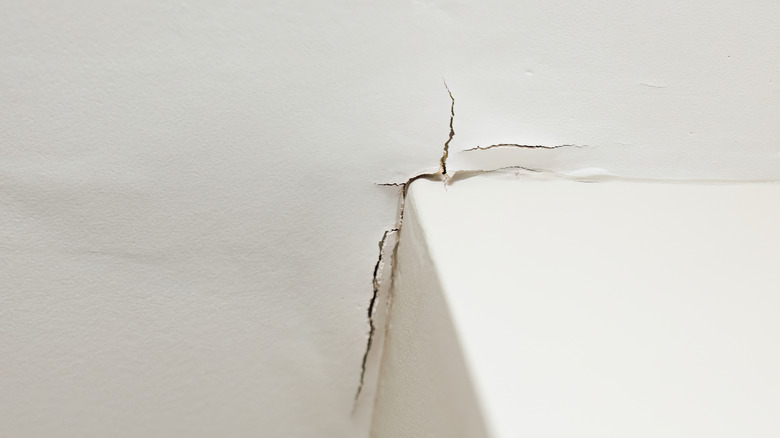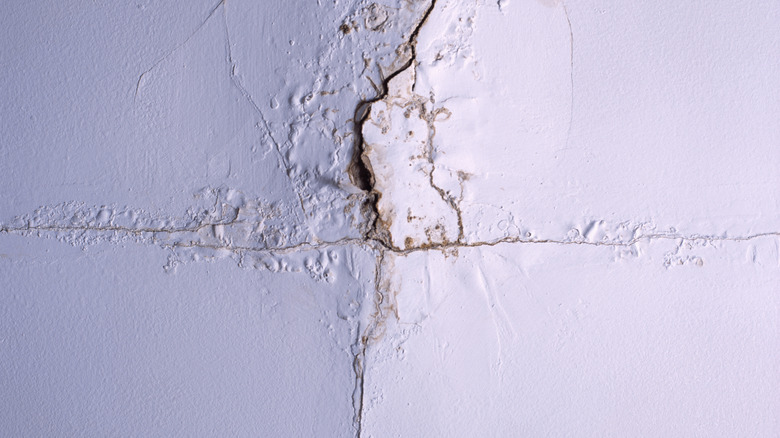What It Means If You Find A Spiderweb Crack In The Ceiling
If you've been looking up at the ceiling lately, you may be considering adding the stunning ceiling design trend we'll be seeing everywhere in 2025 to your home! A less exciting thing you may be peering up at, however, is a spiderweb crack. Is this something to be concerned about? House Digest spoke exclusively with Bob Beacham, House Digest's expert carpenter and remodeler, to learn more about these spiderweb cracks and what they mean for your home.
"Most of the time it's not a serious problem," Beacham said. "If it's just thin cracks that don't change, you can paint over them. Modern acrylic/latex should cover them successfully. If old paint is flaking in small patches, try giving it a light sand to remove any loose material first. If this results in visible unevenness that you can't live with, the whole ceiling might need a skim coat of plaster." If you are looking to repaint your ceiling, there's a smart trick that makes painting high walls and ceilings a breeze.
How do these spiderweb cracks start?
So, how exactly do these spiderweb cracks happen? During an exclusive interview with House Digest, Bob Beacham gave us the answer. "Houses move. New homes settle a little after construction. Older homes — particularly timber framed — move with the seasons and changes in temperature and humidity," Beacham said. "Drywall, used for ceilings, doesn't have much flex, so small cracks can appear. Sometimes these are spiderweb but they can also be linear. If the drywall is old, wasn't installed well, or too much filler was used, cracks may appear along the joints between boards, although these aren't usually spiderweb patterns. Sometimes it's not the drywall but simply old paint that cracks up."
One thing to keep in mind is that, according to Beacham, hairline cracks and spiderweb cracks often form the same way. The difference is in the way the cracks look. A hairline crack can be one or many linear cracks in a ceiling while a spiderweb crack starts at a central point and move outwards. These spiderweb cracks can be very thin. Knowing the differences between these two cracks can help you better identify them in your home. This can then help you explain the issue to a professional either on the phone or when they visit your home.
When is it a good idea to reach out for professional help?
While some types of cracks can be nothing to worry about, there are times when it would be a good idea to consult a professional. When House Digest spoke exclusively with Bob Beacham, he shared when it would be best to seek advice from a trained professional. "If there are water stains as well as cracks, you need to find and stop the leak," Beacham explained. "It could be coming from pipework or problems with the roof. If you don't possess the necessary skills, call a plumber or a roofer." Beachman added that signs that you may be dealing with a more serious issue include a sagging ceiling, bits of plaster and drywall falling down in chunks, widening cracks, and cracks that run down the wall. "Any of these could be a serious issue with the foundations or the support framework of the building," Beachman warned. "Doors and windows that have started to stick are another sign of movement."
If you see any of these signs, call a structural engineer. It is important to get help for these concerns quickly rather than trying to tackle them on your own. This is just one of the many home improvement projects that are better left to the professionals.


